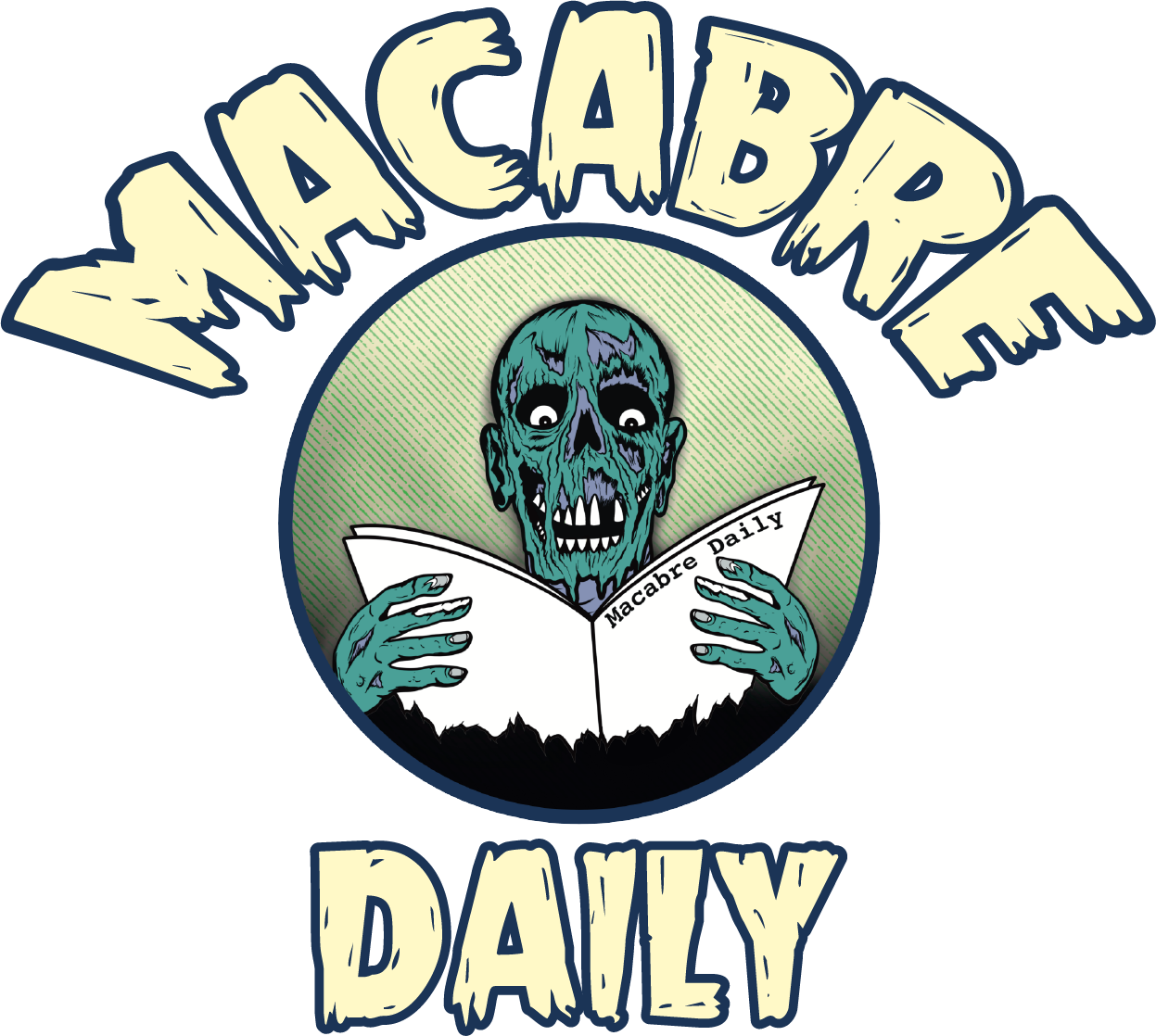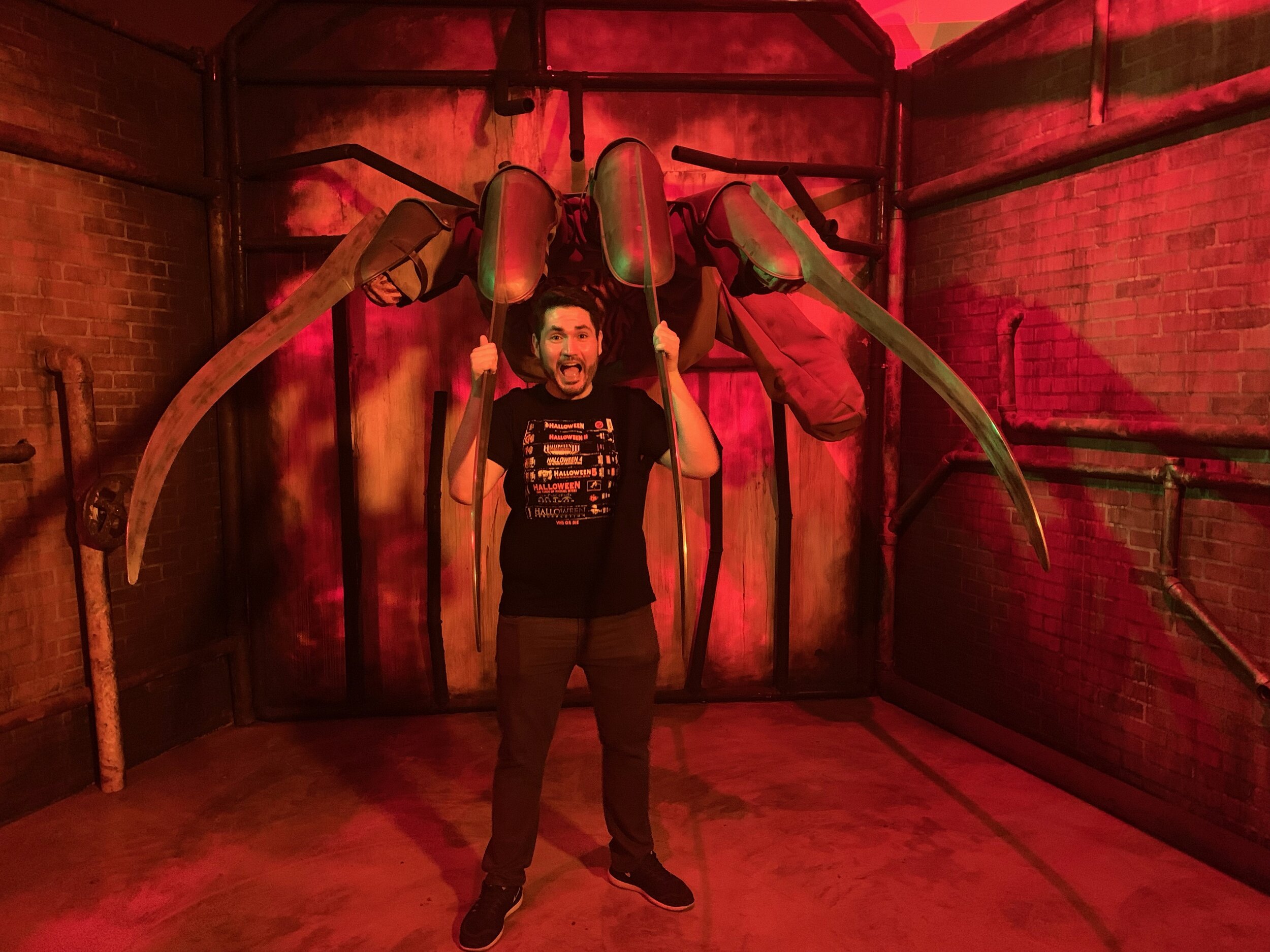COLLECTOR'S CRYPT - DANZA MACABRA VOL. 3 (SEVERIN FILMS BLU-RAY)
Blind buys are somewhat of a slippery slope for physical media collectors, especially when it’s a box set. Oftentimes there is one maybe two films in a set someone is after, but in order to get those you have to succumb to the whole bunch. Past experience has shown that these kinds of blind buys often lead to a little disappointment, but that isn’t always the case. Much like the video store days of old, box set blind buys are an adventure where you aren’t entirely sure what you’re going to get except what is promised on the cover and back description. In the age of the internet it’s easy to just look up reviews for movies, but it’s hard to know how many collectors actually do this kind of due diligence. When these bets pay off, it can feel like a kaleidoscope of discovery and the sense of wonder that has escaped us since the dawn of the streaming era. Danza Macabra Volume 3: The Spanish Gothic Collection is the subject of our “box set blind buy” today as we’re sure it may be for many others. Are these Spanish horror films going to be valued additions to your collection or just another set that you leave in the “to watch” pile?
WHAT’S IT ABOUT?
DANZA MACABRA VOLUME 3: THE SPANISH GOTHIC COLLECTION is the latest in our acclaimed series of Gothic Horror Blu-ray box sets and the first to focus on Spain’s tradition of Gothic Horror, which – particularly during the Franco dictatorship – was characterized by daring concepts, lush visuals, extreme sexuality, and a startling aesthetic all its own. These four classic shockers from the 1970s represent the genre at its most audacious: In NECROPHAGOUS, the debut feature by writer/director Miguel Madrid, a fractured family in a crumbling castle conceals a grisly graveyard secret. The anthology film CAKE OF BLOOD – never previously available outside of Spain – presents a quartet of supernatural tales by four young filmmakers. Hammer Films director John Gilling brings his inimitable style to the occult thriller in CROSS OF THE DEVIL. And a terminally ill woman is enticed by eternal life in Leon Klimovsky’s vampire masterwork, NIGHT OF THE WALKING DEAD. Each film in this collection has been scanned from its original negative – with over 8 hours of Special Features – for the first time ever in America.
HOW IS IT?
Necrophagous (1971)
The only way to describe Necorphagus is strange, but not in a bad way per se. Mixing elements of Giallo, Gothic “Old Dark House”, monster movies, and folk horror into a blender to varying degrees of success. The story is more convoluted than it needs to be and throws a lot of narrative red herrings at you. Take the instigating event that brings Michael home to his family’s castle. Seemingly coming home to meet their new baby he learns that his wife died giving birth to their stillborn child, and as shocking as that is, it only serves as a reason for Michael to come home. The story evolves from there into a plot of grave robbing, corpse-eating, and murder mystery, but as exciting as that sounds it struggles on occasion to get there. Like so many movies of this era, the first and third acts are great, but the second act is a real slog that complicates simple plotlines and looks good doing it.
It is noteworthy that the technical filmmaking here is best described as arthouse meets Hammer with lush and beautiful backdrops shot from interesting perspectives and angles. One scene in particular in the back half of the film where the Cemetery Caretaker Mr. Fowles is looking through the gates sees a lovely and slow pull-back and shift from first to third person perspective. Again, in many ways “Necropahgus” works as a movie that is hard to pin down and interesting to look at, even if it doesn’t always succeed in melding so many ideas and genres together. “Necropahgus” isn’t the most entertaining, but it is certainly doesn’t lose any points for not trying.
“Cake of Blood” (1971)
One of the stranger anthology films that we’ve come across here at the crypt that blends all different kinds of genres in novel, and occasionally confusing ways. The four stories share no connection aside from being adjacent to each other, and range from the obscure first story “Tarot” to the more direct “Terror Among Christians” with its vampire leanings. As far as anthologies go, there is something about this one that makes it more alluring than your standard fare. Perhaps it is the disorienting nature of the stories and the arthouse style in which they are directed and edited. Each one is unique and odd in its own way, with the best ones being “Victor Frankenstein” and the aforementioned “Terror Among Christians”. The former is a re-telling of the story of Shelley’s titular doctor that takes some interesting liberties with the story that make it hornier and also sadder. “Terror Among Christians” is a curious twist on the vampire genre by placing things in the Roman era that’s straightforward and visually arresting with the use of smoke and lighting to create an eerie mystique.
The other stories, “Tarot” and “The Dance” are both very abstract in their delivery. “Tarot” opens the film and feels disjointed from the start with a dreamlike feel akin to Ridley Scott’s Legend with even less narrative linearity. It’s an interesting story, it’s just hard to follow. “The Dance” is probably the lesser of the four, but that’s not to say it is bad so much as it leaves you wanting. A derelict man is tempted by another man to help rob the house of an actress but starts to realize things aren’t what they seem. It’s a familiar setup that doesn’t have a good or coherent payoff, but from a technical level, it is gorgeous to look at. The same could be said of all four of these stories in that they capture a mysterious look and vibe that is complimented by the obscurity of the stories.
“Cross of the Devil” (1975)
“Cross of the Devil”, like other films in this set, is a bit of an odd duck. It is inspired by the Tomb of the Living Dead Films, but only lightly, and shares more in common with a Hammer film than anything else with its Gothic aesthetic and surroundings. But then again, the use of pastel and bright colors in the set design and costuming make this a more vibrant-looking Gothic horror movie than you've likely ever seen. Our main character, Alfred, is a stoner writer whose sister has died causing him to return to his home and investigate. Alfred loves his kief, and right from the jump, we see him potentially hallucinating from getting too high which adds a strange pot paranoia element to the story. It doesn’t fully work, mostly because at no point do we believe that what we are shown isn’t actually what’s happening which makes it almost comical how aloof Alfred is because of his kief smoking, something some of us can surely relate to.
“Cross of the Devil” is wholly entertaining in the strangest way that is hard to put into words. There is a playfulness to the story that never takes itself too seriously but never veers into complete parody either. The melodrama is high with accusations of infidelity and betrayal abound, but underneath is a half-cocked satanic plot that never really reaches the peak of its potential. Still, “Cross of the Devil” shouldn’t lose points for not trying as across the 98-minute runtime you get everything from nefarious top-hatted cult leaders, Knights Templar skeletons, and an over-engineered plot that trips over itself. The sum of these parts is more enjoyable than your average Gothic horror movie that is accidentally absurd while attempting to play it very straight.
“The Night of the Walking Dead” (1975)
“Night of the Walking Dead” opens with a credit sequence featuring a Hendri-esque guitar solo to the backdrop of vibing vampires in washed out filter lenses. In a way, this is sort of a prelude to the eccentricity held within that borrows heavily from Dracula albeit with some interesting twists. Strating with the non-descript Spanish town which has a huge vampire problem and the locals know it. Each night they lock themselves in their homes, and when one of them passes they make sure to drive a stake through their heart so they don’t come back. Too bad vampires know how to pull stakes out, which within this lore means the vampire is then free to com back to life. A fun spin on the formula, which then finds Catherine falling for the dashing Rudolph de Winberg who brings her fully into his underground world of vampires. The melodrama is pulpy and light, and the story moves at a great pace with little wasted runtime.
The music is a standout here as the score has almost an improvised jazz fusion vibe that oddly fits. It is hard to put into words, but it places modern sounds in a periodic context to great effect. “Night of the Walking Dead” does have some missteps, like having an overly complicated first act setup, but not enough to hold against it for folks looking for a different kind of vampire movie. “Night of the Walking Dead” was directed by León Klimovsky who collaborated a lot with one of Spain’s genre legends, Paul Naschy (Jancinto Molina) whom with he would make 8 films. It is safe to say that both individually and in total all four of these films offer something very unique and innovative to the gothic horror genre. Severin once again has curated a collection of lesser-known films (for North American audiences at least) that demonstrate the diversity and ingenuity of the Gothic Horror genre!
Necrophagus
HOW DOES IT LOOK?
Severin Films has once again outdone themselves with respect to the quality of the transfers for these releases. All the films included were restored from their original camera negatives and the transfers themselves are a delight to look at. What is of utmost importance is that Severin’s transfers maintain the periodic look of the film without cleaning up too many of the aesthetics from film. It’s true preservation work wehn the images are clear and significantly improved without affecting the natural grain and hallmarks unique to shooting on film. It is hard to have anything contrary to positive to say about, with true 1080p and original aspect rations like 1.85:1 and 2.35:1 this is likey the best these films have ever and will ever look. Images from this release are used throughout this review and seend below.
Necrophagus
Cake of Blood
Cross of the Devil
Night of the Walking Dead
HOW DOES IT SOUND?
Almost all of the films included have a mono audio track save for “The Night of the Walking Dead” which has a Stereo track included. About half of the movies have the option of an English language track and all of them have English subtitles regardless of the spoken language options. The sound is perfectly fine as is, and much like older international releases wouldn’t benefit much from any enhanced surround sound tweaking. All the audio tracks have a good balance between the music, effects, and dialogue so one element doesn’t ever overpower the others. Much like the visual components, Severin have taken care to maintain the look and sound of the film as it was originally shown and for all intents and purposes have succeeded. Not a surprise, really!
Cake of Blood
ANYTHING SPECIAL?
In box sets such as these, special features often are a significant draw as they are overflowing with documentaries, essays, interviews, and commentaries. Severin doesn’t disappoint here as they’ve sourced over 8 hours of special features across all four films all of which seem to be newly produced for this set. Given this is the first time these films are hitting North America Severin makes the inaugural release most likely the definitive one. The first feature we took in was from “Necrophagus” titled Something You’ve Never Seen Before, a video appreciation by Ángel Sala, Head Of Programming At The Sitges Film Festival. Ángel gives a passionate defense and celebration of what is truly an odd film and speaks to the films references to Hammer and Amicus films while mixing lots of styles and genres together. It explains how disorienting of a watch it can be, but not in a negative way. The inclusion of Gothic and Giallo elements riffing from the Italians can be felt, despite Ángel suggesting what we did in our review that not every choice works even if they’re all interesting.
The next feature was from our favorite film from this set, “Night of the Walking Dead” and it is one of the many reasons we love brands like Severin. Spain’s Cinematic Vampires is a 24-minute video essay and apprecation by Xavier Aldana Reyes, Author Of “Spanish Gothic: National Identity, Collaboration And Cultural”. Xavier gives a dense, but brief look into the history of horror and vampire cinema in Spain. He attributes the massive growth of the industry during the years of 1968-1974 to the rise of independent cinema, the loosening of regulations around what can be show, and a blossoming international film market. The latter was most important since many of these films were created during the rule of Francisco Franco, the fascist dictator who ruled Spain until 1975. So much of the films and how they were made were done as a reflection of Francoism and the ways in which artists would subvert rules to make transgressive art. Xavier covers a lot of ground in only a short amount of time, which should inspire the curious like us to seek out his book for more! A full list of special features included in this release is below.
Cross of the Devil
Bonus Materials
NECROPHAGOUS
Audio Commentary With Andy Marshall-Roberts, Host Of The Nasty Pasty Podcast
Something You've Never Seen – Appreciation By Ángel Sala, Head Of Programming At The Sitges Film Festival
The First Horror Film Festival In The World – Remembrance By Maria Pilar Rafáles, Daughter Of Sitges Film Festival Founder Antonio Rafáles
Trailers
CAKE OF BLOOD
Audio Commentary With Rod Barnett Of NaschyCast And The Bloody Pit, And Dr. Adrian Smith, Co-Author Of Norman J. Warren: Gentleman of Terror
My Generation – Interview With Actress Marisa Paredes
I Just Wanted To Have Fun – Interview With Co-Director Jaime Chávarri
To Whoever Wants To Watch – Interview With Actor José Lifante
An Arthouse UFO – Appreciation By Ángel Sala, Head Of Programming At The Sitges Film Festival
CROSS OF THE DEVIL
Audio Commentary With Kim Newman, Author Of Anno Dracula, And Barry Forshaw, Author Of Brit Noir
Fascinated By Bécquer – Interview With Screenwriter Juan José Porto
The Real Templar Knights Movie – Appreciation By Ángel Sala, Head Of Programming At The Sitges Film Festival
Fantasy And Imagination: The Legacy Of Gustavo Adolfo Bécquer – Video Essay By Xavier Aldana Reyes, Author Of Spanish Gothic: National Identity, Collaboration And Cultural Adaptation
THE NIGHT OF THE WALKING DEAD
Audio Commentary With Kat Ellinger, Author Of Daughters Of Darkness
A Deadly Invitation To Another Dimension – Appreciation By Ángel Sala, Head Of Programming At The Sitges Film Festival
Leo's Signature – Interview With Writer Juan José Porto
Dead Man Walking – Interview With Actor José Lifante
Spain's Cinematic Vampires – Video Essay By Xavier Aldana Reyes, Author Of Spanish Gothic: National Identity, Collaboration And Cultural Adaptation Alternate Spanish Credit Sequence
Night of the Walking Dead
LAST RITES
“Danza Macabra” is one of the best collections of Spanish Gothic cinema we’ve ever come across, and has some of the most consistently entertaining “blind buys” you’re likely to find out there. While collections of lesser known films such as these can often be hit or miss, this is most certainly a home run for Severin as they offer both outstanding transfers, fascinating films, and heaps of special features to boot!
THE GORY DETAILS
Thank you to the fine fiends over at Severin for providing a review copy for the crypt! Danza Macabra Volume 3: The Spanish Gothic Collection is available NOW and can be purchased via Severin Direct or DIABOLIK DVDor other physical media retailers!
Stay up to date with “The Dark Side Of Pop Culture” by following Macabre Daily on Instagram, Facebook, and Twitter.
























